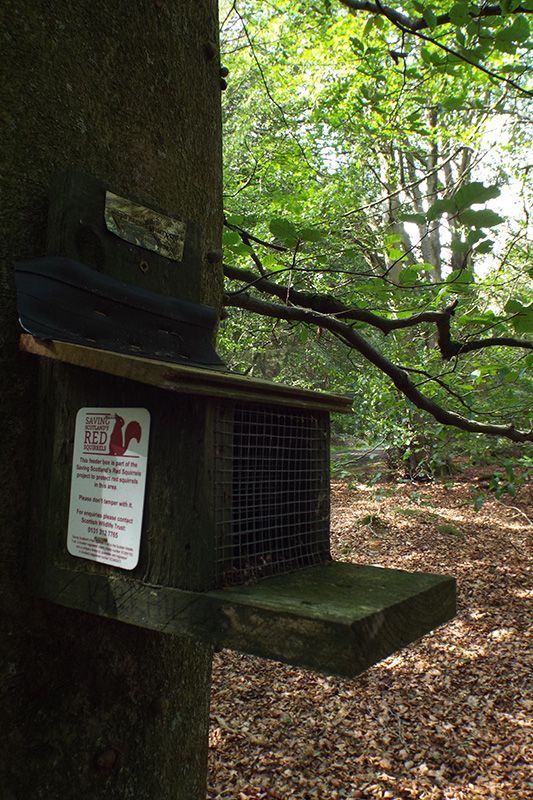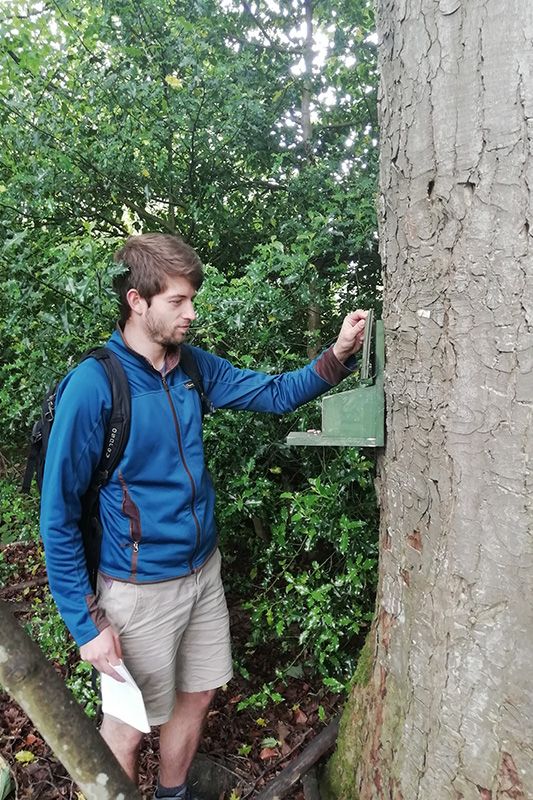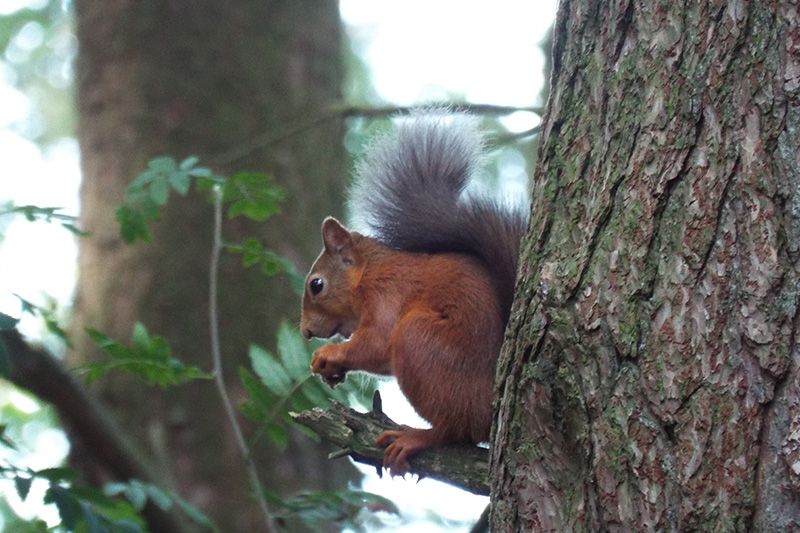Despite the fact that Scotland’s red squirrel numbers have dropped hugely in recent decades, it is still home to 75% of our UK population. This makes it extremely important that we ensure Scotland’s endangered red squirrels have a secure future. We’ve been funding intern George Porton, who is part of the Saving Scotland’s Red Squirrels initiative. He’s been analysing the data collected from various monitoring strategies with the aim of evaluating how effective conservation management of the species has been in different regions. George tells us how he got on.
Red squirrels in Scotland
Scotland is an important refuge for the UK’s red squirrels and is home to 75% of the UK’s population. However, Scotland’s red squirrels are at increasing threat from grey squirrels which both outcompete the reds and infect them with the deadly squirrel pox virus. Greys have a large population across the central belt of Scotland, an isolated population in Aberdeen and have become widespread in South Scotland due to colonisation from England and the central belt.
Saving Scotland’s Red Squirrels (SSRS) was set up in 2009 to ensure a positive future for the red squirrels in Scotland. They aim to create a coordinated and strategic grey squirrel control effort in Scotland. This involves management objectives and strategy that differ by region to reflect the different situations in the area.
Vital monitoring of squirrel populations
Reliable evidence is important for the success of long-term conservation projects, such as SSRS, as it used to inform efficient management. SSRS have set up a large monitoring program in order to gain evidence of how populations of the two species of squirrel are changing over time in the areas they work.
Surveys are conducted every spring, across all the regions where SSRS work. Feeder boxes, with sticky tape on the underside of the lid, are used to collect the hair of squirrels. This can be later looked at under a microscope to see which species of squirrel was present. This data allows you to see the distribution of the red and grey squirrels and importantly how this has changed over time. The data set is therefore useful in evaluating how effective management has been in different regions.

Feeding station 
George checking squirrel feeding station
Dealing with the problem of imperfect detection
However, the feeder box surveys do not detect the squirrels 100% of the time. Therefore, some areas will appear as if they have no squirrels, but in fact the squirrels were present and instead just went undetected. This will be a greater problem if the probability that the feeder boxes detect the squirrel is different between years. For example, a cold spring may lead to less squirrels being detected due to them being less active. Without accounting for this, it would look like the population of squirrels had decreased that year, but it was just that they were not detected in the surveys due to cold weather. This could lead inaccurate conclusions being drawn, which could be very important given that they may go on to inform future management.
During this PTES funded internship, technique known as multi-season occupancy modelling was applied to the data collected during SSRS’s spring surveys. By using this method, the problem of not always detecting squirrels was corrected for so the resulting trends in squirrel distribution over time are more accurate.
Important evidence to inform future management
This project has helped to provide SSRS with reliable evidence to evaluate the efficacy of their current management. In some regions, management has been incredibly successful, and the distribution of greys has been reduced considerably. However, other areas have been highlighted where management is not currently having the desired effect on squirrel populations. These results act as an early warning that can be acted on to ensure red squirrels continue to thrive in Scotland into the future .
Written by George Porton, PTES intern.

